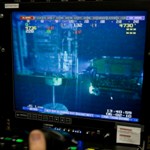Collection of Oil Continues

The lower marine riser package (LMRP) containment cap, installed on 3 June, continues to collect oil and gas flowing from the well and transport them to the Discoverer Enterprise drillship on the surface. On 5 June, a total of 10,500 barrels of oil was collected and 6.7 million m3 of natural gas was flared. From 3 through 5 June, the volume of oil collected was 16,600 barrels and 9.8 million m3 of natural gas was flared.
Optimisation continues and improvement in oil collection is expected over the next several days. It will be a few days before an assessment can be made as to the success of this containment effort.
This is a complex operation, involving risks and uncertainties, being carried out 1,524 m under water. The LMRP containment cap never before has been deployed at these depths and conditions, and its efficiency and ability to contain the oil and gas cannot be assured.
Preparations for additional planned enhancements to the LMRP cap containment system continue to progress.
The first planned addition will use the hoses and manifold that were deployed for the ‘top kil’ operation to take oil and gas from the failed Deepwater Horizon blow-out preventer (BOP) through a separate riser to the Q4000 vessel on the surface, in addition to the LMRP cap system. This system is intended to increase the overall efficiency of the containment operation by possibly increasing the amount of oil and gas that can be captured from the well and is currently expected to be available for deployment in mid-June.
The second planned addition is intended to provide a more permanent LMRP containment cap system by directing the oil and gas to a new free-floating riser ending approximately 91 m below sea level. A flexible hose then will be attached to a containment vessel. This long-term containment option is designed to permit more effective disconnection and reconnection of the riser to provide the greatest flexibility for operations during a hurricane and is expected to be implemented in early July.
In the meantime, work on the first relief well, which started 2 May, continues and has currently reached a depth of 3,948 m. The second relief well, which started 16 May, is at 2,918 m, and testing of the BOP is continuing. Both wells are still estimated to take approximately three months to complete from commencement of drilling.






